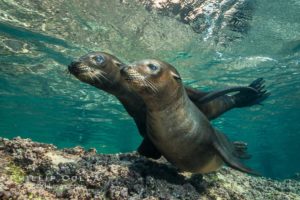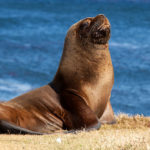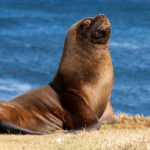Facts about Sea Lions
 Earlier we could see sea lions only in the zoo. However, living on the island of Vancouver, we managed to see these animals with our own eyes and watch them in the wild. The impression remained indelible. Firstly, the hoarse roar of these mammals is heard from afar, in the second, their number on the coast surprised no less.
Earlier we could see sea lions only in the zoo. However, living on the island of Vancouver, we managed to see these animals with our own eyes and watch them in the wild. The impression remained indelible. Firstly, the hoarse roar of these mammals is heard from afar, in the second, their number on the coast surprised no less.
Despite the fact that sea lions are located at the point of unloading timber from timber trucks into the water and present great difficulties in transporting logs, people are forced to share this bay with them.
Before writing this post about them, I wondered: What do I know about sea lions? As it turned out, practically nothing. Therefore, I share with you interesting information.
- Sea lions for breathing under water use the lungs. About half an hour, they have enough air in the depths, after which they are forced to come up to the surface. In addition, oxygen is stored not only in the lungs, but also in the blood and muscles. Water does not enter the nostrils, as the nostrils are protected by special flaps.
- The body is streamlined and elongated, the head is small, and the neck is long and very flexible. On a nice face there are funny antennae, called vibrissae. Dexterously move by land using front and rear fins. To the question: what distinguishes the sea lion from the seal, you can safely answer: the sea lion has ears.
- Pregnancy of females lasts a year. Young lion cubs are called puppies, they are fed by milk up to 5-7 months. Their mothers find thanks to their sharp sense of smell. Females are smaller than males.
- Wool differs in quality of fur from other relatives – less dense and short, therefore it is not appreciated as fur of fur seals. However, sea lions are named after the wool of males, which is longer and looks like some short mane.
- These pinnipeds are very hardy, as they can swim 9-10 thousand kilometers and make a break only for sleep.
- They have seasickness. If the sea lion is on the ship, it will certainly feel bad and will suffer from motion sickness, just like a man.
- They live in the herds and lead the harem life. A male can fertilize up to a hundred females in a season and up to three months without food.
- The annual cycle of these pinnipeds is divided into nomadic (active) and rookery. Sexual maturity in females comes to the third year of life, but for males due to high competition to five to seven years. The sea lions live to the age of twenty.
- Sea lions have a sense of rhythm. For example, the Californian sea lion named Ronan has become quite famous for his ability to recognize complex rhythms without additional training.
- By nature, sea lions are smart animals. There is a known case when faced with an killer whale in the open sea, the sea lion approached the yacht with people in search of protection.
- The high population of sea lions is explained by the economic disadvantage of the production of these animals and prevented their fishing. This saved them from mass destruction.



























